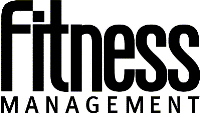
Women rule! Don’t take offense, guys. It’s just that, since the new millennium, this truth has been emerging, and it just can’t be ignored any longer — especially by business owners.
I remember not too many years ago when we reported in the pages of FM that the number of female members in fitness facilities had finally caught up with that of men. In fact, the latest statistics published by IHRSA show that women make up 57 percent of U.S. health club members. Women are just a lot more serious than men about fitness. The National Sporting Goods Association’s 2007 sports participation survey shows that women constitute a majority of participants in four of six fitness activities: yoga, 85 percent; aerobic exercising, 71 percent; exercise walking, 63 percent; working out at a club, 55 percent; and exercising with equipment, 51 percent.
But, I’m not giving you these numbers to brag about my gender. Really. I’m doing it because, as a facility operator/professional, this knowledge can and will improve your business. If you put it to use.
At the IHRSA trade show and convention in 2001, Tom Peters, an influential guru of management, spoke about the importance of this emerging trend in the fitness business industry. And, he pointed out that while more than half of fitness center members are women, a lot less than that are on fitness center management teams. The problem with that, he said, is that men and women are completely different: They have different exercise regimen needs, and they purchase services differently. As such, it’s not possible for men to create the “perfect” fitness facility experience for women.
That’s a problem, because while Business Week, in an article titled I Am Woman, Hear Me Shop, reported that while “women earn less money than their counterparts, … they make more than 80 percent of buying decisions in all homes.” It’s critical, says the article, that business owners understand women’s needs and dissatisfactions and, in turn, change the way they design, position and sell their products.
With that said, ask yourself, “How have I responded to an increase in the number of women members in my facility?” If you’re drawing a blank, that means you’ve obviously not given it much thought. As such, you haven’t done anything, and you’re losing business.
Even if you have made some changes, it will still help to understand some fundamental differences between the sexes, as pointed out on the Entrepreneurial Connection website’s SuccessSkills Archives article collection titled
How to Market to Women.
• First, women are social beings. They see their membership not just as a quest to become healthy, but as a way to connect with others.
• Second, a woman’s decision-making style, especially when purchasing, is to thoroughly investigate, especially on the web. And, she doesn’t respond well to pressure to close the sale. Therefore, answer questions, but don’t push.
• Third, the details matter. Women notice things that men tend to merely disregard, such as poor attention by the staff at the front desk, unpleasant odors in the locker room, weights not placed in their proper place, etc.
• Fourth, women are stressed. Between their roles as workers, wives and mothers, they juggle more in life than their male counterparts. The fitness facility should be a place where the products work well and are easy to operate, and customer service should come with a human touch. Research shows that, to reduce their stress, women are willing to “pay more for delivery of groceries, meals and dry cleaning, and for service providers such as financial counselors, personal trainers and dog groomers.”
I love statistics. They let us know where things really stand. But, you actually have to use these statistics to your benefit. If you do, you’ll likely be at the receiving end of one of women’s greatest qualities: They’re the most loyal of customers, and they will spread the positive word about your business to all of their friends. If not, expect the opposite. Tom Peters made a point of saying that he’d spoken with a member of a New York stock brokering firm who shared that their average male customer recommended him as a broker to 2.6 people, while the average woman customer recommended him to 21!

No comments:
Post a Comment